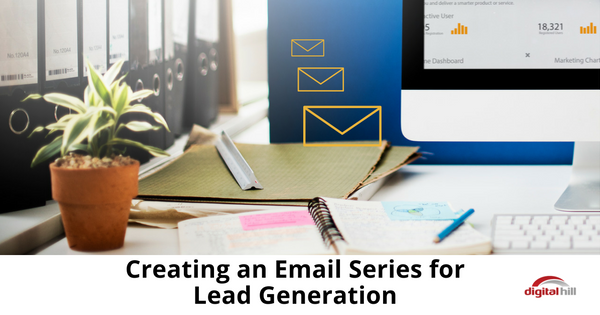Creating an Email Series for Lead Generation

Today’s email methods aren’t the mass shotgun approach that worked in the past. The current process is more intricate but also more precise. It should result in higher open rates, higher traffic and potentially more leads and sales.
A good campaign will include multiple emails sent on a regular basis which should increase leads. Automation allows you to write emails in advance and decide the trigger for them to be sent. That way, people on your email list could receive notes before birthdays, when they register for an event, make a purchase or abandon their shopping cart.
Here’s the process to create a campaign for multiple emails to multiple recipients:
1. Create a goal
What do you want people to do or know? About a new promotion? Give recent purchasers suggestions for related products? Send coupons for something they buy regularly? Of a friendly welcome note for new subscribers to your mailing list? A goal can assist with planning and get your team on the same page for desired outcomes.
2. Look at your lists
An “everyone gets everything” master list, may be good for universal announcements, but less effective for messages to specific customer groups. Instead divide your list into different segments – location, interests, birth month, product purchased, etc.
Then, based on your campaign goals, emails out to these segments, and you’ll see a higher ROI. Start the segmenting process when someone signs up. Use subscription forms that funnel subscribers into appropriate segments.
3. Find the best email software for your needs
There are a variety of products on the market. They help keep track of the open rate, gather demographics and track link clicks. Prices vary depending on features and subscriber volume, but many offer free versions for basic service. MailChimp offers 12,000 free emails to 2,000 emails per month.
4. Plan your nurture email series
Not everyone will respond to your first message. It makes sense to plan a long-term strategy to get results. Scheduled emails reinforcing your goal and message will be more effective than randomly emailing customers when you have something for them.
5. Write your emails in advance
So they have similar language and tone. Also, write your direct emails and autoresponder notices. Start with a strong subject that will get people interested enough to open. Then deliver messages about how your company and its products or services can solve problems or make lives better.
6. Keep at it
Don’t just stop at one nurture campaign. Keep monitoring the current campaign and use the stats to improve additional campaigns. Are you getting higher than usual unsubscribe or un-opened rates? Does changing the subject line make a difference over the same amount of time? Have you received any positive or negative feedback?
Need help with writing and executing your next nurture campaign? Our team can help. I’ve helped many businesses build and execute successful nurture campaigns to build leads and sales. Contact me.
